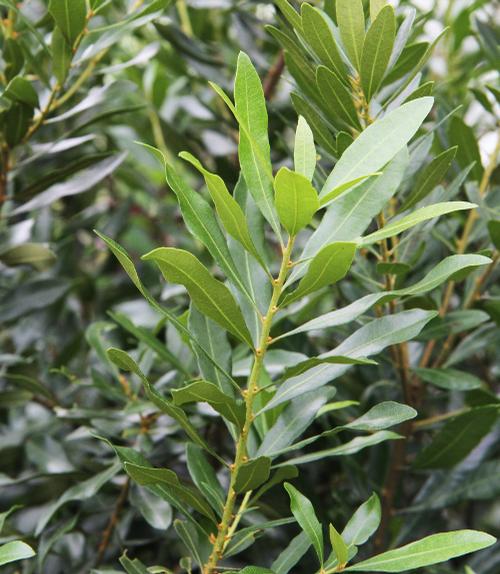Myrica cerifera
Considered the southern bayberry, this native broadleaf evergreen shrub or small tree can grow 20-25' tall and 8-10' wide but is usually much shorter. When new growth develops in the spring, the rich bayberry scent is most prominent. Waxy gray, aromatic, spherical fruits are 1/8" wide and massed in clusters of two to six against the stems. Waxmyrtle flowers are fragrant but are not showy. Flowers bloom in April. Male and female flowers are usually on separate plants, but sometimes a plant produces both male and female flowers. Foliage may be browned or dropped at temperatures below 0°F.
Waxmyrtle provides excellent winter and extreme weather cover. It is a host plant for the Red-Banded Hairstreak butterfly. Flowers provide an excellent source of nectar for honeybees and butterflies. The fruits are eaten by birds, especially yellow-rumped warblers, in the fall and winter.
Waxmyrtle tolerates urban environments and is a good choice along streets and roads that are salted in winter. Use in groups in native, winter, children’s, butterfly, or pollinator gardens. It is also a good selection for stream or pond margins where periodic flooding or drought may occur or on a bank for erosion control as well as seaside locations. Use it as a barrier, privacy hedge, or attractive small tree with lower limbs removed.
- Native, broadleaf, evergreen to semi-evergreen shrub
- Scented leaves
- Waxy, blue-gray berries
- Category:
Shrub,
Native
- Hardiness Zone: 7-9
- Height: 10-20 ft
- Spread: 8-10 ft
- Foliage Color:
Green
Login for pricing




